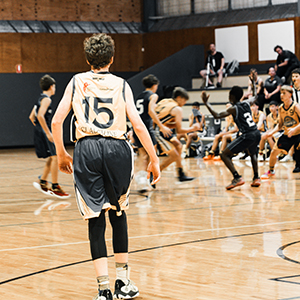On Wednesday 20 March, the grounds at South East Regional Hospital (SERH), Bega become the scene of a simulated multi-vehicle accident, to help give medical students the life-like experience of rescue, response and treatment in an emergency situation.
For the second year running at SERH, the highly orchestrated, multi-agency event takes place in Bega, giving rural medical students a unique opportunity, helping them to prepare for the years ahead after they graduate.
Coordinator of the exercise and SERH anaesthetist, Dr Nathan Oates, says simulated training in a safe environment is important for students as the realism they experience provides valuable lessons.
“The simulation evokes a sense of urgency and aims to better prepare responders for action in a real-life emergency situation – helping staff and students understand what can happen before a patient rolls in off the ambulance trolley,” Dr Oates said.
“The multi-agency training exercise gives staff and students an unforgettable learning experience.”
Students will join forces with staff on a professional development program on trauma management when they participate in the simulated multi-vehicle accident and fire scenario.
Cars will be positioned to replicate a major traffic incident and with the support of NSW State Emergency Services, Rural Fire Service, Fire and Rescue, the Volunteer Rescue Association, and NSW Ambulance.
‘Patients’ will be extricated from their vehicles, triaged, stabilised at the scene, and then transported inside the hospital, where staff will run a simulation to treat them.
“Simulation like this provides learners with a library of experience to draw upon so that when specific situations are encountered during real-time patient care, those times are not the first experience the learner has regarding that same situation,” Dr Oates said.
Nathan says doctors can tend to work in a very confined environment, only seeing what happens within the walls of the hospital.
“We look after people that come in from the outside all the time, but most of the time we don’t get to see what happens at the roadside.
“And some of the things that happen at the roadside are really important to understand, to know why we see things in a particular way, how we respond to certain injuries and how we treat the patient.”
The organisers create a complete hands-on training environment through the multiple casualty scenario, combining realistic trauma wounds and injuries, applied to mannikins and live-role players, with props to create a realistic scene.
ANU Rural Clinical School Academic Coordinator, Dr Erika Jaensch, said the team is delighted to be part of the initiative.
“It underscores the importance of cooperation and synergy among the different healthcare and emergency services in our region, fostering a culture of collaboration between responders,” Dr Jaensch said.
Medical students from various stages of their academic journey, including 1st, 3rd, and 4th years from ANU, will join nursing students from the University of Canberra in this immersive learning experience.
“Additionally, we are excited to welcome high school students from the Bega Valley who have expressed an interest in medicine or allied health,” Dr Jaensch said.
“We are hoping through this simulation exercise to nurture our next generation of healthcare professionals, giving them an invaluable opportunity to observe the simulation exercise and engage with students from the universities.”
“We are very much looking forward to a day filled with learning, teamwork and invaluable experiences for all participants.”
The event is also an opportunity for first responders and emergency services to be able to see the medical response inside the hospital, so they too get important insight into the patients’ journey.
medical response inside the hospital, so they too get important insight into the patients’ journey.








